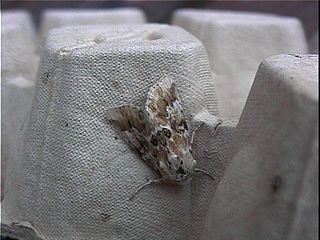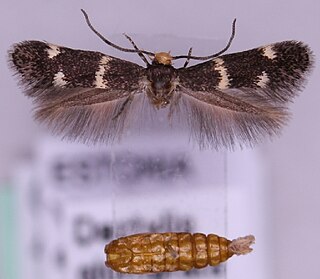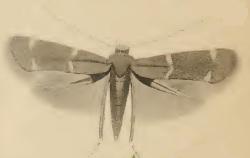
Dactylis is a genus of Eurasian and North African plants in the bluegrass subfamily within the grass family. Dactylis is native to North Africa, they are found throughout the world, and are an invasive species. They are known in English as cock's-foot or cocksfoot grasses, also sometimes as orchard grasses.

The large skipper is a butterfly of the family Hesperiidae.

Mythimna pallens, the common wainscot, is a moth of the family Noctuidae distributed throughout the Palearctic realm from Ireland in the west, through Europe to Central Asia and Amur to the Kuriles in the east. The species was first described by Carl Linnaeus in his 1758 10th edition of Systema Naturae.

Dactylis glomerata, also known as cock's-foot, orchard grass, or cat grass (due to its popularity for use with domestic cats) is a common species of grass in the genus Dactylis. It is a cool-season perennial C3 bunchgrass native throughout most of Europe, temperate Asia, and northern Africa.

Mythimna l-album, the L-album wainscot, is a moth of the family Noctuidae. The species was first described by Carl Linnaeus in his 1767 12th edition of Systema Naturae. It is distributed throughout Europe, but is also found in North Africa from Morocco to Tunisia and in the Levant, then east across the Palearctic to Central Asia. It is not found in the far north of the Arabian Peninsula. The limit in the north varies. It occurs on the northern edge of the range as a migrant. From southern England, then Denmark and southern Scandinavia, the north limit cuts across the Baltic Sea across the Baltic states then south of Moscow to the Urals.

Lasiommata petropolitana, the northern wall brown, is a butterfly species belonging to the family Nymphalidae. It can be found in large parts of Europe, from the Pyrenees and Alps up to Scandinavia and Finland, east to Russia and Siberia.

Elachista argentella is a moth of the family Elachistidae found in all of Europe, except the Balkan Peninsula.

Mythimna conigera, the brown-line bright-eye, is a moth of the family Noctuidae.

Eremobia ochroleuca, the dusky sallow, is a moth of the family Noctuidae. It is found in Central and Southern Europe and the Middle East.

Elachista luticomella is a moth of the family Elachistidae. It is found in most of Europe.

Mesapamea secalis, the common rustic, is a moth of the family Noctuidae. The species was first described by Carl Linnaeus in his 1758 10th edition of Systema Naturae. It is found in Europe, north-west Africa, Turkey and northern Iran.

Elachista apicipunctella is a moth of the family Elachistidae found in Europe. It is found in all of Europe, east into northern Russia.

Elachista freyerella is a moth of the family Elachistidae that is found in all of Europe, except the Balkan Peninsula. It is also found in North America.

Glyphipterix achlyoessa, commonly known as the cocksfoot stem borer, is a species of moth in the family Glyphipterigidae. It is endemic to New Zealand and can be found throughout the country. This species inhabits meadows and open grasslands. The larvae are hosted by species in the genus Juncus as well as by the species Dactylis glomerata. Adult moths are commonly on the wing from October to December.

Elachista albifrontella is a moth of the family Elachistidae found in Europe.

Elachista subnigrella is a moth of the family Elachistidae found in Europe.

Elachista obliquella is a moth of the family Elachistidae found in Europe.

Elachista bifasciella is a moth of the family Elachistidae. It is found from Sweden to the Pyrenees, Italy and Romania and from the Netherlands to Poland. It is the type species of the genus Elachista.

Arethusana is a butterfly genus from the subfamily Satyrinae of the brush-footed butterfly family (Nymphalidae). It is composed of only one species, Arethusana arethusa, the false grayling.



















